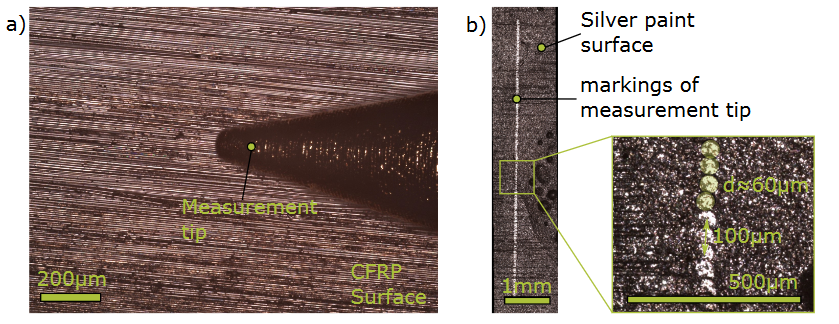The carbon fibers in fiber reinforced plastics could be used sensorially to observe the present stress state of the structural component. However, the use of resistivity requires a detailed understanding of the electrical potential distribution in a given specimen. Current experimental techniques measure the electrical potential on a limited amount of relatively large electrodes mounted onto the parts surface. This approach suffers from the limited spacial resolution as well as the retroactivity between attached electrodes and observed specimen. This article discusses an experimental method to scan the electrical potential distribution on the surface of a conductor using a typical 4-probe setup and a gantry style robot to move one of the probes. The method is applied to eletrical conduction processes in carbon fiber reinforced plastics (CFRPs) in an effort to visualize the electrical potential distribution near current contacts. This approach allows us to have a much more detailed understanding of electrical conduction processes in CFRP, which can help to better interpret experimental data in the future. A two-dimensional mathematical model based on Laplace equation is derived with appropriate boundary conditions and compared to the measured results. Experimental and numerical results agree well and show the existance of strong current inhomogeneities within the CFRP part. The developed setup is simple to implement, but nevertheless prooved to be effective in measuring the explicit electrical conduction paths in both isotropic and anisotropic conductors.
P. Scholle, M. Sinapius
Measurement of Two-Dimensional Electrical Potential Fields in CFRP using Four-Probe Resistance Scans
Journal of Physics Communications, (2021) [Link]

